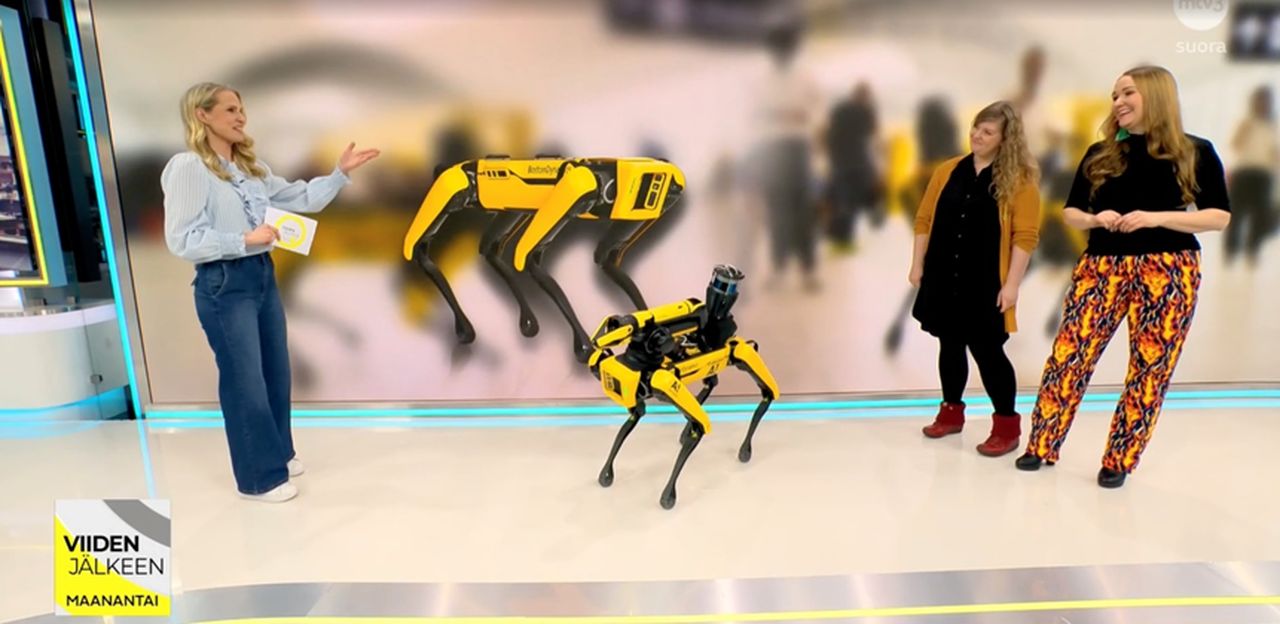
Charles R. Goulding and Preeti Sulibhavi examine Finnish artist Sini Majuri’s seamless blend of traditional glassblowing with modern techniques.
On the fortress island of Suomenlinna, founded in 1748 to protect Helsinki, artist Sini Majuri carries on the centuries-old craft of glassblowing in her studio tucked amidst the historic stone walls. But within the arched wooden doors, the 40-year-old Finnish artist pairs this traditional medium with modern technologies like 3D printing to create conceptual artwork exploring humanity.
Majuri didn’t initially intend to work in glass. While attending a wearable technology exhibit in China in 2007, she was mesmerized by a giant glass sculpture by fellow Finnish artist Oiva Toikka. “I just admired the work and was hypnotized by it,” Majuri recalled. “I thought it seemed like such a cool material and I knew then that I wanted to learn how to use it.” She went on to earn a degree in glass and ceramics, finding glass compelling as both a fragile, temporal substance and one able endure across ages.
After over a decade of mastering glassblowing, hot sculpting, and other hands-on techniques, Majuri now pushes boundaries by integrating 3D printing. She designs metal illustrations inspired by fairytales and comics using CNC machining. These designs get encased within layers of colored glass through the traditional graal method invented in 1916, where images are sealed within transparent glass. Majuri also employs 3D scans and software to measure and model the shapes for her headdresses and lamps. This fusion of antiquity and futurism attracts global audiences. Her conceptual work has shown internationally, won over 20 awards, and often sells out.

On Monday, March 27th, Roboballet show was on MTV3’s “Viiden jälkeen” show. During their appearance, Majuri and Hepo-aho shed light on their latest project, the Roboballet which premiered in Suomenlinna Sea Fortress in February 2023, and featured robots from Boston Dynamics. Aalto University’s Spot robot was also featured, showcasing its remarkable abilities under the guidance of Aalto University’s student Jaakko.

3D Printing Overcomes Glass Limitations
Other glass artists and researchers are also blending 3D printing with this material’s unique optical qualities to expand creative possibilities. Glass has long been treasured for its refractive and reflective properties, translucency, and ability to diffuse light. However, its extreme fragility, sensitivities to temperature changes, and other stubborn physical characteristics have made it notoriously challenging to manufacture using 3D printers.
Recent years have seen increased innovation specifically overcoming the barriers that have hindered 3D printing intricate glass objects. In 2019, MIT researchers pioneered an architectural-scale 3D glass printing platform called G3DP2. Since this advancement, the 3D printed glass industry has accelerated into greater viability.

Novel Resins and Methods Emerge
A partnership between Swiss glass bottle producer Univerre and ETH Zurich university researchers demonstrates ongoing efforts to move 3D printed glass from niche material to wider creative use. This team combines a proprietary photosensitive resin with digital light processing (DLP) technology to 3D print glass. Their unique resin contains plastic polymers and organic molecules bonded to glass precursor chemicals. Under DLP’s curing UV lights, the resin solidifies into glass layer-by-layer. Varying the light intensity controls the strength of pores formed, enabling different internal structures.
The Research & Development Tax Credit
The now permanent Research and Development (R&D) Tax Credit is available for companies developing new or improved products, processes and/or software.
3D printing can help boost a company’s R&D Tax Credits. Wages for technical employees creating, testing and revising 3D printed prototypes can be included as a percentage of eligible time spent for the R&D Tax Credit. Similarly, when used as a method of improving a process, time spent integrating 3D printing hardware and software counts as an eligible activity. Lastly, when used for modeling and preproduction, the costs of filaments consumed during the development process may also be recovered.
Whether it is used for creating and testing prototypes or for final production, 3D printing is a great indicator that R&D Credit eligible activities are taking place. Companies implementing this technology at any point should consider taking advantage of R&D Tax Credits.
Conclusion
Artists like Sini Majuri seamlessly blend centuries-old glass craft with 3D printing’s cutting edge capacities, continuing the material’s history of serving both aesthetic and functional aspirations. As 3D printing processes advance, glass objects with greater intricacy, efficiency, and optical purity come closer within reach. The quest to master 3D printing with such an extraordinarily versatile material at scales from miniature to architectural continues to drive glass innovation.
